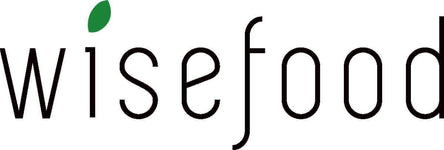Support:
+49 (0) 89 24418362

Environmentally harmful PLA coatings on to-go cups made of cardboard?
As we have mentioned many times, the EU single-use plastic ban in July 2021 is fast approaching. This not only bans plastic straws, but also to-go cups, coffee stirrers and ice cream spoons. However, what many do not yet know is that this will also ban disposable tableware made of PLA, so-called bioplastic. These are often marketed as more environmentally friendly, but that's not easy to say. PLA is also regularly used as a coating on paper cups or other more "sustainable" disposable tableware products to make them last longer. In the next paragraphs we will explain what the problems are and why PLA and PE are only considered more environmentally friendly, but are not necessarily so.
👍 For cold and hot drinks to go
🥇 Various paper cups
❤️ For the sake of the environment
😊 Can be disposed of in waste paper
💪 White paper coffee cups 200 ml (up to 230ml possible)
🧃Sustainable with water-based coating (without plastic PLA or PE coating)
👍 For cold and hot drinks to go
🥇 Various paper cups
❤️ For the sake of the environment
😊 Can be disposed of in waste paper
💪 White paper coffee cups 200 ml (up to 230ml possible)
Original price
Original price
€0,00
Current price
PLA and PE: what exactly is this “bioplastic”?
In order to understand the problem, it is first important to clarify what bioplastic actually is and how it is produced. PLA, for example, is short for Polylactic Acid, a plastic made from renewable resources such as corn starch. Through certain manufacturing processes such as polymerisation, plastics can be manufactured that have comparable properties to petroleum-based plastics. As a result, PLA has the reputation of being more sustainable than conventional plastics, but hardly differs in terms of functionality and stability (bioeinwegchina.de).PLA: More environmentally friendly than conventional plastic?
In theory, PLA sounds a lot more environmentally friendly than conventional plastic, since it is made from renewable raw materials. In reality, however, this cannot be generalized in this way. On the contrary, PLA is in many cases just as harmful to the environment as other plastics (umweltbundesamt.de). In 2009, the Federal Environment Agency carried out a comprehensive analysis of the ecological balance of PLA cups in comparison to other cups made from renewable raw materials. Various factors were taken into account and impact criteria included: Impact on the climate, consumption of non-renewable resources, contribution to the formation of ozone, contribution to the acidification of soil and water (acidification potential), impact on human health, impact on animals and plants through emissions of Substances, changes in the nutrient balance in soil and water (due to over-fertilization), land use and the impact of land use on biodiversity. In all of these points, PLA was not able to convince in the long term. According to the Federal Environment Agency, "the environmental impact of PLA cups (...) is comparable to that of PET" and "therefore significantly higher than that of disposable cardboard cups (...)" (umweltbundesamt.de).PLA coatings on paper cups: harmful to the environment?
So it is nothing new that bioplastics such as PLA or PE are not a permanent solution to the plastic problem in the disposable tableware sector. In summary, the ecological balance is simply too bad and alternatives made of cardboard or zero waste concepts are significantly more sustainable. At the same time, there seems to be another big problem. Many disposable tableware products, such as coffee cups, made of cardboard are coated with PLA or PE so that they are more stable and can withstand hot drinks for longer. In principle, this is an understandable process, but creates other difficulties. Bioplastics such as PLA are made from renewable raw materials and are considered to be biodegradable. What is often not considered is what exactly biodegradable or recyclable means in this context. Because many plastics made from renewable raw materials can only be recycled or degraded industrially in large plants. On the one hand, the To Go cups have to be brought to these facilities first. The delivery route wastes resources. On the other hand, these systems often have an immensely high energy consumption, which can be seen as harmful to the environment. Paper cups with a PLA coating are usually no better for the environment than cups made of PLA or conventional plastic (umweltbundesamt.de).PLA coatings on To Go cups: what is the solution?
One of the biggest advantages of paper cups is that in most cases they can easily be recycled or composted along with waste paper. However, the PLA coatings often make this impossible or even incorrectly sorted into the garbage and then simply disposed of. So what's the solution? More and more manufacturers rely on to-go cups made of cardboard that have no PLA or PE coating. However, in order for this to spread further, the information about PLA and other bioplastics must first be spread further. To-go cups made of cardboard are not bad per se or to be seen as harmful to the environment, but there are actually only problems with the implementation. It is therefore important to omit these PLA coatings or to replace them with other, more sustainable coatings. Another option are of course other cups made from renewable raw materials. At Wisefood, we have made it our task to develop innovative solutions for disposable tableware from renewable raw materials such as grain or apple pomace. Just have a look at our online shop . There you will find the best solutions for the PLA problem with paper cups.-
Product title
Original priceOriginal price €19,99€19,99€16,80Current price €19,99 -
Product title
Original priceOriginal price €19,99€19,99€16,80Current price €19,99 -
Product title
Original priceOriginal price €19,99€19,99€16,80Current price €19,99 -
Product title
Original priceOriginal price €19,99€19,99€16,80Current price €19,99 -
Product title
Original priceOriginal price €19,99€19,99€16,80Current price €19,99





